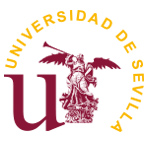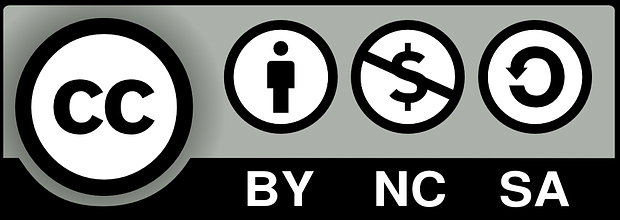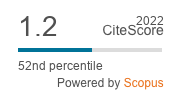Systematic mapping on the application of the work of Pierre Bourdieu in Higher Education
DOI:
https://doi.org/10.12795/revistafuentes.2021.12307Keywords:
bibliography, Bordieu, field, capital, habitus, research, higher education, mapAbstract
Bourdieu's work, especially the concepts of field, capital and habitus, have transcended in the social sciences to understand what happens in the educational process. This article presents the results of a systematic mapping from the methodological criteria of Petersen et al. (2008) to identify the bibliographic application of these concepts in Higher Education. 104 documents hosted in the Scopus and Web of Science bibliographic databases between 2009-2019 were analyzed. The study variables were languages, countries, accessibility, types of work, jobs with the greatest impact and lines of research. It was found that there is some research on the subject, with a small number of open access documents, most of it in English and from the United Kingdom. The lines of research turned out to be varied, with a tendency to study the principles of choice and the trajectories of students, teaching practices, the influence of habitus and capital in the transition from university to work, as well as gender studies. It is concluded that the elaborated mapping offers researchers a detailed selection of the scientific production of high international impact that can be used to determine their research routes.
Downloads
References
Alonso, L. (2002). Pierre Bourdieu in memoriam (1930-2002). Entre la bourdemanía y la reconstrucción de la sociología europea. Revista Española de Investigaciones Sociológicas, 97, 9-28. http://www.reis.cis.es/REIS/PDF/REIS_097_03.pdf
Bonello, M., Wright, J., Morris, J. & Sadlo, G. (2018). Bourdieu and interprofessional education: what’s the relevance? Studies in Continuing Education, 40(1), 1-16. http://dx.doi.org/10.1080/0158037X.2017.1360269
Bornmann, L., Thor, A., Marx, W., & Schier, H. (2016). The application of bibliometrics to research evaluation in the humanities and social sciences: An exploratory study using normalized Google Scholar data for the publications of a research institute. Journal of the Association for Information Science and Technology, 67 (11), 2778-2789. http://dx.doi.org/10.1002/asi.23627
Bourdieu, P. & Passeron, J. (1996). La reproducción. Elementos para una teoría de la enseñanza. Fontamara.
Bourdieu, P. & Wacquant, L. (2005). Una invitación a la sociología reflexiva. Siglo XXI editores.
Bourdieu, P. (1998). La distinción. Criterio y bases sociales del gusto. Taurus.
Bourdieu, P. (2001). Poder, derecho y clases sociales. Desclée de Brower
Bourdieu, P. (2012). Bosquejo de una teoría de la práctica. Prometeo Libros
Bustamante, G. (2016). Sobre el concepto de campo en Bourdieu. Magis, 9(18), 49-66. http://dx.doi.org/10.11144/Javeriana.m9-18.sccb
Cantú, V., Glasserman, L. & Ramírez, M. (2019). Comportamiento métrico sobre evaluación de la educación en emprendimiento. Investigación Bibliotecológica: archivonomía, bibliotecología e información 33 (79): 99-117. http://dx.doi.org/10.22201/iibi.24488321xe.2019.79.57902
Casillas, M., Ramírez, A. & Ortiz, V. (2014). El capital tecnológico: una nueva especie de capital cultura. Una propuesta para su medición. En A. Ramírez y M. Casillas (Eds.), Háblame de TIC: Tecnología digital en la Educación Superior (pp. 23-38). Córdoba: Brujas
Cerón, A. (2012). Habitus y capitales: ¿Disposiciones o dispositivos sociales? Notas teórico-metodológicas para la investigación social. Revista Latinoamericana de Metodología de la Investigación Social. 4(2), 68-82. http://www.relmis.com.ar/ojs/index.php/relmis/article/view/53/168
Cerón, A. (2019). Habitus, campo y capital. Lecciones teóricas y metodológicas de un sociólogo bearnés. Cinta de Moebio, 66, 310-320 https://doi.org/10.4067/S0717-554X2019000300310
Cruz. M. (2018). Comprender a Bourdieu: las estrategias sociales de capitalización. Revista Colombiana de Sociología, 41(2), 219-237. https://doi.org/10.15446/rcs.v41n2.67294
De las Heras, C., Martel, T. & Jambrino, C. (2018). Análisis de las redes académicas y tendencias científicas de la comunicación en las universidades españolas. Revista Prisma Social, 22, 229-246. https://revistaprismasocial.es/article/view/2584/2760
Delgado, E. & Repiso, R. (2013). El impacto de las revistas de comunicación: comparando Google Scholar Metrics, Web of Science y Scopus. Comunicar, 41, 45-52. https://doi.org/10.3916/C41-2013-04
Giménez, G. (1999). La sociología de Pierre Bourdieu en Perspectivas teóricas contemporáneas de las ciencias sociales, Proyecto Antología de teoría sociológica contemporánea. UNAM/FCPyS.
Grenfell, M. (2012). Pierre Bourdieu Key Concepts. Routledge
Hart, C. (2019). Education, inequality and social justice: A critical analysis applying the Sen-Bourdieu Analytical Framework. Policy Futures in Education, 17(5), 582–598. https://doi.org/10.1177/1478210318809758
Ignatow, G. & Robinson, L. (2017). Pierre Bourdieu: theorizing the digital, Information. Communication & Society, 20(7), 950-966. http://dx.doi.org/10.1080/1369118X.2017.1301519
Lee, K. & Chen, W. (2017). A long shadow: Cultural capital, techno-capital and networking skills of college students. Computers in human behavior. 70, 67-73. https://doi.org/10.1016/j.chb.2016.12.030
López, E., Vázquez, E. & Román, P. (2015). Análisis e implicaciones del impacto del movimiento MOOC en la comunidad científica: JCR y Scopus (2010‐13). Comunicar: Revista científica iberoamericana de comunicación y educación, (44), 73‐80.
Moreno, A. (2019). Estudio bibliométrico de la producción científica en Web of Science: Formación Profesional y blended learning. Píxel-Bit. Revista de Medios y Educación, 56, 149-168. https://doi.org/10.12795/pixelbit.2019.i56.08
Peirats, J., Marín, D. & Vidal, M. (2019). Bibliometría aplicada a la gamificación como estrategia digital de aprendizaje. RED. Revista de Educación a Distancia, 60. http://dx.doi.org/10.6018/red/60/05
Pérez, M. & Vladimirovna, N. (2017). La producción científica sobre la innovación social para el desarrollo local: una revisión bibliométrica la estructura y la evolución del campo de dominio científico. Prisma Social. Revista de Ciencias Sociales, 19, 146-182. https://revistaprismasocial.es/article/view/1750
Petersen, K., Robert F., Shahid, M. & Mattsson, M. (2008). Systematic Mapping Studies in Software Engineering. EASE, 8, 68-77. https://cutt.ly/OyHGni4
Ramírez, M. & García, F. (2018). Co-creación e innovación abierta: Revisión sistemática de literatura. Comunicar, 26(54), 9-18. https://doi.org/10.3916/C54-2018-01
Rodríguez, A., Raso F. & Ruiz, J. (2019). Competencia digital, educación superior y formación del profesorado: un estudio de meta-análisis en la Web of Science. Píxel-Bit. Revista de Medios de Comunicación, (54), 65-81. https://doi.org/10.12795/pixelbit.2019.i54.04
Salado, L., Velásquez, M. & Ochoa, R. (2016). La apropiación de las TIC en los estudiantes universitarios: Una aproximación desde sus habitus y representaciones sociales. Estudios LAMBDA. Teoría y práctica de la didáctica de la lengua y literatura. 1(1), 215-234. https://doi.org/10.36799/el.v1i1.32
Singh, H., Díaz-Andrade, A., & Techatassanasoontorn, A. (2018). The practice of ICT-enabled development. Information Technology for Development. 24(1), 37-62. https://doi.org/10.1080/02681102.2017.1283284
Wacquant, L (2018). Bourdieu Comes to Town: Pertinence, Principles, Applications. International Journal of Urban and Regional Research, 42(1), 90-105. http://dx.doi.org/10.1111/1468-2427.12535
Published
How to Cite
Issue
Section
License
Copyright (c) 2021 Revista Fuentes

This work is licensed under a Creative Commons Attribution-NonCommercial-ShareAlike 4.0 International License.
Authors who publish in this journal accept the following conditions:
Authors conserve the copyrights and cede to the journal the right for first publication, with the work registered with the attribution licence of Creative Commons, which allows third parties to use the published work as long as they mention the authorship and the first publication in this journal.
The authors may make other independent and additional contractual agreements for the non-exclusive distribution of the version of the article published in this journal (e.g. include it an institutional repository or publish it in a book) as long as it clearly indicates that the work was first published in this journal.
Authors are allowed and indeed recommended to publish their work on the internet (for example on institutional or personal pages) before and during the revision and publication process, because it can lead to productive exchanges and greater and faster dissemination of the published work (see The Effect of Open Access).
Accepted 2021-03-20
Published 2021-05-16
- Abstract 469
- PDF (Español (España)) 396
- HTML (Español (España)) 264
- EPUB (Español (España)) 78














